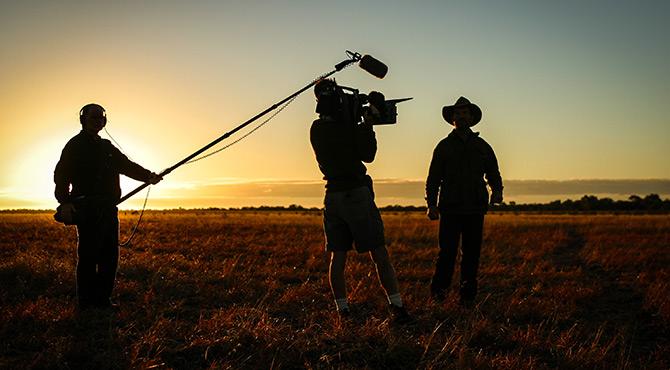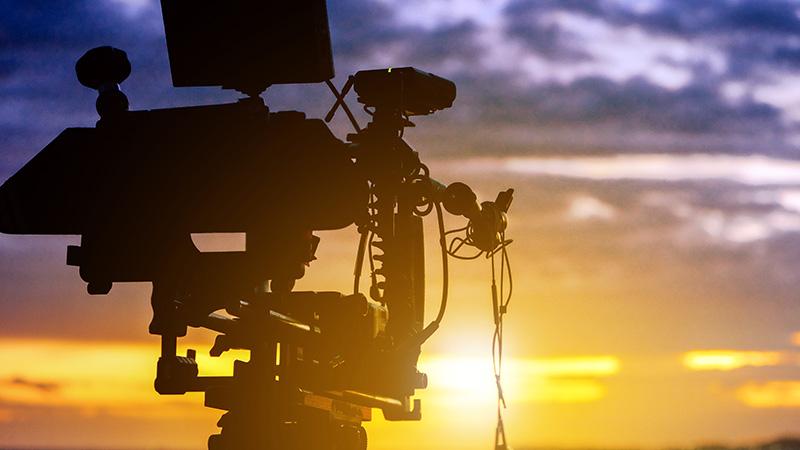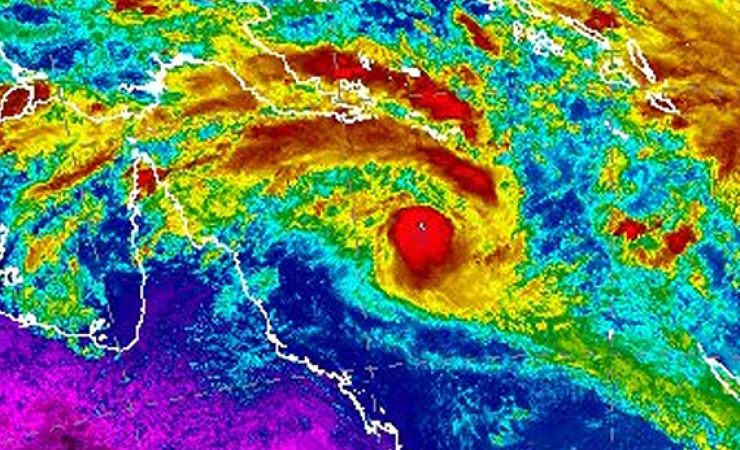Rebates, road trips, and red dirt: Your checklist for filming in regional Australia
Picture this: your camera pans across the sweeping plains of the Mundi Mundi Desert, capturing a sunset so spectacular it looks Photoshopped. Or maybe it’s the Jurassic Park-like wetlands of Kakadu, alive with crocs and a soundtrack of cicadas that makes it feel more Avatar than Earthly. Welcome to the magic of regional and remote Australia, where the landscapes are as much the star as your A-list cast.
But while the scenery might steal the show, getting a production crew, cast, and truckloads of gear to these far-flung pockets is no walk in the park. Whether you’re braving the outback’s red dust or navigating a rainforest where Wi-Fi is just a four-letter myth, there’s a lot to wrangle before the director calls "action."
The good news?
Thanks to the Australian government’s new 30% Location Offset rebate, filming in these iconic spots has never been more budget friendly. So, as the film sector gears up for a blockbuster 2025 with dozens of productions in the pipeline, we’ve crafted the ultimate checklist to help you navigate the nitty-gritty of filming off the beaten track while staying on budget and on schedule.
The ultimate checklist for filming in regional and remote Australia
Our General Manager Adam Moon says: “Regional and remote Australia offers some of the most awe-inspiring locations on the planet, but they have their challenges.
“At Stage and Screen, we’ve built our reputation as industry leaders by helping clients troubleshoot the unexpected and deliver seamless travel solutions, ensuring every shoot stays on track – whether that’s navigating vast distances to working with local communities.
“We’ve learned that the key to success lies in preparation and partnerships. Collaborating with local experts, understanding cultural sensitivities, and taking advantage of government incentives can make all the difference in delivering a smooth production.”

1. Scout smarter.
Use state screen agencies like Screen NSW or Screen Queensland to find the perfect locations and connect with local scouts or fixers. Their regional knowledge is invaluable, especially for iconic spots. You can also tap into platforms such as Ausfilm’s talent directory.
2. Secure permissions early.
Filming in national parks or culturally significant locations requires permits – and they can take time. So, start early and liaise with agencies such as Parks Australia. Many permissions and permits fall under local council authority so ensuring you contact local authorities early in the pre-production process will save significant headaches further down the line. If you are filming on Indigenous land, engaging the Traditional Owners to gain permissions and adhere to cultural protocols is essential. Many communities will also provide valuable insights that can enrich your project.
3. Plan transport like a pro. Here’s where Stage and Screen can save your bacon. We can help you combine regional flights, chartered services, and rugged 4WD vehicles for hard-to-reach locations and better still, we are well versed in navigating conditions like seasonal flooding or bushfire-prone areas.
4. Book accommodation in advance
Regional areas have extremely limited lodging. Consider portable cabins for larger crews and prioritise accommodations with essential amenities like air conditioning and laundry facilities.
5. Prepare for catering challenges
Feeding a crew in the middle of nowhere isn’t just about stocking up, it’s about strategy. Partner with local farms, markets, or suppliers for fresh produce, which not only ensures quality but fosters goodwill with the community. For remote areas without suppliers, work with caterers experienced in bush logistics who can set up mobile kitchens. Factor in dietary needs, extended shifts, and the importance of hearty meals to sustain energy in tough conditions.
6. Stay safe and cover all angles
Beyond basic first aid, invest in specific safety measures for the region. Shooting in the north? You’ll need crocodile awareness training and protocols. In arid areas, dehydration and heatstroke are risks, so cooling stations are a must. For extreme environments, hire local guides familiar with natural hazards. Additionally, ensure you have real-time communication with medical facilities via satellite phones for quick decision-making in emergencies.
7. Respect the environment
Leave your location better than you found it. Work with local environmental groups to ensure no long-term damage occurs. For example, in desert areas, even tyre tracks can disrupt ecosystems—coordinate with experts to restore the area post-shoot. On top of a thorough clean-up, consider carbon offset programs or sustainability initiatives tied to your production.

8. Engage the local community
Local communities can be your greatest asset. Employ regional crew and extras where possible, and invite local businesses to bid for catering, transport, or equipment services. Consider hosting an open day or community event to introduce the project.
9. Use incentives strategically
Australia’s 30% Location Offset is a no-brainer, but don’t stop there. State governments often offer complementary grants, particularly for productions that highlight regional tourism or create local employment opportunities. For example, Screen Queensland and Screen Tasmania provide additional funding pools. Keep detailed records of spending in regional areas to streamline your rebate applications and maximise eligibility.
10. Plan for connectivity
Remote regions mean patchy reception at best. Invest in satellite internet for real-time communications and cloud-based data storage to prevent delays in sharing dailies or production updates. For equipment power, use hybrid solar-generator systems that reduce reliance on fuel and offer consistent output. Have a contingency plan not only for delays but also for tech failures, this includes having spares of essential equipment and backup crew to step in when conditions get tough.


